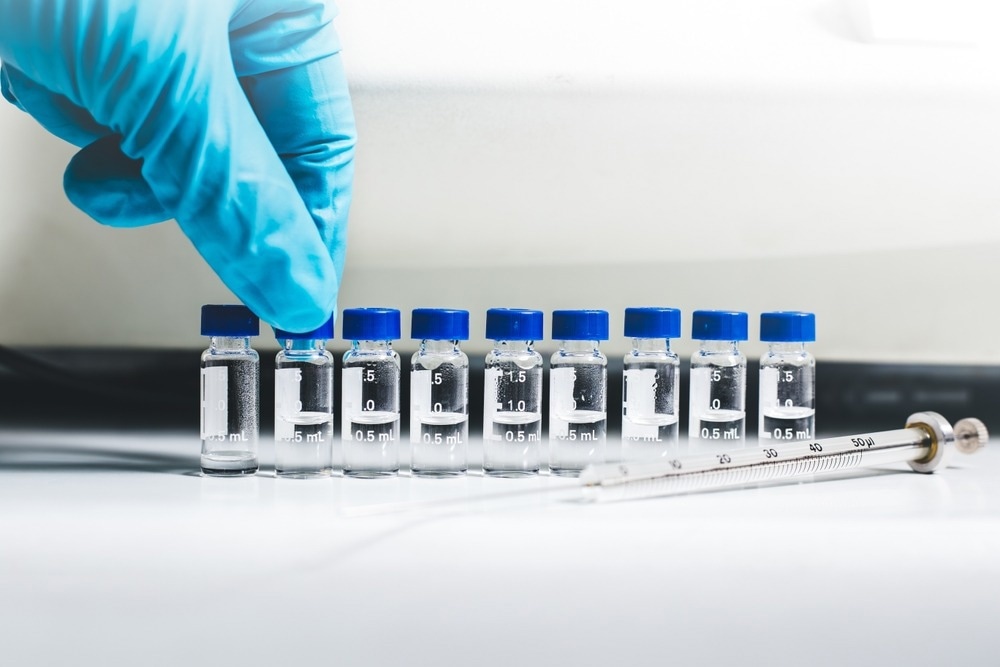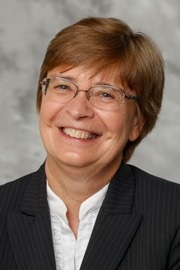In this interview conducted at Pittcon 2024 in San Diego, we spoke to this year's recipient of the Chromatography Forum of Delaware Valley Dal Nogare Award, Susan Olesik.
Could you please introduce yourself and provide the current positions you hold?
My name is Susan Olesik, and I am a University Distinguished Professor and the Dean of Natural and Mathematical Sciences at Ohio State University.
Could you begin by providing us with an overview of your journey in the field of analytical chemistry, particularly focusing on your work in enhanced-fluidity liquid chromatography (EFLC) and carbon stationary phases?
I obtained my Ph.D. in mass spectrometry and then pursued a postdoctoral fellowship with Milos Novotny, focusing on separation science and specifically on supercritical fluid chromatography. After these experiences, I decided to pursue a career in academia, starting as an assistant professor, where I continued my research in supercritical fluid chromatography and mass spectrometry.
I soon became dissatisfied with the limited range of compounds that supercritical fluid chromatography could separate, especially its ineffectiveness with highly polar compounds. In response, my research group and I explored ways to harness the capabilities of supercritical fluids while remaining in the liquid phase.
This exploration led to the development of enhanced fluidity liquid chromatography. This technique starts with conventional liquids and introduces liquified gases to them. Enhanced fluidity liquid chromatography combines many of the benefits of supercritical fluids with the favorable properties of liquids, offering a broader application range in chromatographic separations.
What inspired you to explore enhanced-fluidity liquid chromatography, and how do you believe EFLC advances the capabilities of traditional chromatographic techniques?
Many were skeptical about our venture, predicting that our efforts to chart new territories would fail. We faced the challenge of defining phase conditions, specifically how to maintain the mixtures in a single phase. Additionally, we needed to characterize all the properties of these new mixtures, including their composition and phase boundaries.
A critical aspect of our research involved understanding how the diffusion rate and polarity of the solvents changed when liquified CO2 was added. We also needed to investigate the intermolecular structure of this modified solvent. This required us to undertake an incredible amount of fundamental science before we could proceed with any separation science experiments. This foundational work was essential to move forward in our innovative approach to chromatography.
In your research on carbon stationary phases, what properties have you found them to exhibit, and why are they significant for chromatographic applications?
We started working on carbon chromatography to define separation media other than silica. A variety of reactions occur on silica surfaces that defeat separation. The idea was that if we could control carbon surfaces, we could define a new type of separation science to replace silica surfaces.

Image Credit: S. Singha/Shutterstock.com
Your work with nanoscale materials for chromatographic and mass spectrometric applications is fascinating. Could you discuss a particular project or discovery in this area that you find most exciting?
We discovered that electrospinning produces nanofibers. These are long fibers that are typically 300 nanometers to 400 nanometers in diameter. If we can make a mat out of them, we could replace the matrix using a technique called matrix-assisted laser desorption ionization mass spectrometry.
After performing the mass spectrometry, we have a surface that absorbs the laser light. The mass spectra are then obtained using a technique known as surface-assisted laser desorption, or SALDI for short.
Other scientists have used surface-assisted laser desorption. SALDI was studied because when you use a matrix, you get a lot of background signals in the mass spectrum from the matrix molecules, which is a major problem if you are trying to study low molecular weight compounds. However, a surface does not pollute the background at all.
We discovered that if you spin these nanofibers onto any surface, they provide a surface that produces signals into the mass spectrometer with no background. Using these nanofibers, we get incredibly low detection limits.
The detection limits can also be decreased by using polymer nanofiber composites, which are made by putting carbon or metal nanoparticles inside the polymer nanofibers. This raises the ionization efficiency even higher. As a result, we get very low detection limits and high signal-to-noise ratios.
Considering your commendation from NASA for contributing a GC column to the Cassini-Huygens probe, can you share how your research intersects with space exploration and what this collaboration means for the field of analytical chemistry?
It was an extremely exciting time for my research group. I had just returned from a presentation at the Pittsburgh Conference (Pittcon), and an individual from NASA had been in the audience during one of my talks about our new carbon material. Afterward, I got a call that said, "Well, we need a separation device capable of separating unsaturated compounds that are potentially indicative of the early stages of life."
Essentially, they wanted a device that could be laser-welded to the Huygens probe. The Huygens probe was then parachuted to Titan's surface with the mission of sampling the atmosphere. This shows the importance of analytical chemistry and its applications in different fields.
Pittcon Thought Leader: Susan Olesik
Where do you see the future of chromatography and analytical chemistry heading, especially with the rapid advancements in nanotechnology and material science?
Many of the developments in separation science and other areas of analytical chemistry indicate that we are continuing to advance to lower and lower detection limits and are starting to study much more complicated systems.
As we examine very complicated systems, often in biological or environmental science applications, the field of analytical chemistry is being pushed to perform in ways that are currently not feasible. We will have to innovate to achieve this constantly.
What do you consider the biggest challenges and opportunities facing researchers in your field today?
Analytical chemistry poses a unique challenge in that its instruments often perform exceedingly well. Many of the instruments we develop come equipped with separation capabilities, ensuring that upon sample injection, an output signal is obtained. However, the flip side of this proficiency is that it can mask the need for highly skilled operators to optimize instrument performance.
Complex samples can be inserted with minimal separation, potentially leading individuals to overlook suboptimal instrument performance. The level of expertise needed to comprehend and harness the instrument's capabilities to their fullest extent is significant.
Congratulations on being this year's award recipient of the Chromatography Forum of Delaware Valley Dal Nogare Award. What does this achievement mean to you personally?
The Chromatography Forum of the Delaware Valley is very well-known in the field of chromatography and separation science for bringing together some of the best separation scientists in this country.
To receive an award from such a group is extremely special. The Dal Nogare Award has a long history of excellence, and I am incredibly thrilled to be the recipient of such an honor.
As we mark the 75th anniversary of Pittcon, could you share your first memory or experience of attending this conference and how it impacted your view of the scientific community?
My first experience with the Pittsburgh Conference was as a graduate student at the University of Wisconsin-Madison. It seems that the tradition of academic analytical chemists bringing their graduate students to Pittcon continues to this day, mirroring the practice from years ago. Pittcon draws a substantial crowd from the analytical chemistry community, providing a platform for invaluable interactions.
Witnessing the Pittsburgh Conference for the first time as a young graduate student was truly remarkable. Now, as a faculty member, I am delighted to extend this experience to my own students and allow them to experience it, too.
What are you most looking forward to at Pittcon 2024 in San Diego?
We are seeing the very best of many different sides of analytical chemistry at Pittcon this year. I have listened to electrochemistry talks where researchers are looking at the extracellular space in the brain and understanding how signals travel across that space. It is described as the great unknown of brain chemistry. Seeing this side of electrochemistry and listening to these talks is incredible.
On the other hand, separation science is helping to define how to find biomarkers indicative of specific diseases. The range of the science that happens here at Pittcon is phenomenal.
About Susan Olesik
Susan Olesik received her A.S. from Vincennes University, her B.A. from DePauw University in 1977, and her Ph.D. in 1982 from the University of Wisconsin-Madison under the auspices of James W. Taylor in analytical mass spectrometry. She was a postdoctoral fellow for analytical separation science with Milos Novotny at Indiana University from 1982-1984 and on gas phase ion chemistry with Tomas Baer at the University of North Carolina-Chapel Hill from 1984-1986. She has been  a faculty member at The Ohio State University since 1986 and is currently a University Distinguished Professor and Dean of Natural and Mathematical Sciences.
a faculty member at The Ohio State University since 1986 and is currently a University Distinguished Professor and Dean of Natural and Mathematical Sciences.
Susan's awards include the following: the 2023 Dal Nogare Award; 2023 and 2021 Analytical Scientist - 100 Most Influential Analytical Chemists; 2020 Ohio State University (OSU) Distinguished University Professor; 2020 Eastern Analytical Symposium Award for Outstanding Achievements in the Fields of Analytical Chemistry; 2019 Analytical Scientist -Top 20 Most Influential Analytical Chemists; 2017 Analytical Scientist - Top 10 Analytical Mentor; 2016 OSU President’s and Provost’s Council on Women - Glass Breaker’s Award; 2014 American Chemical Society (ACS) Helen M. Free Award for Public Outreach; 2014 ACS Award in Chromatography; 2012 AAAS Fellow; 2010 OSU College of Engineering - Building Bridges Excellence Award; 2009 ACS Fellow; 2008 ACS National Award for Encouraging Disadvantaged Students into Careers in the Chemical Sciences; 2008 Stanley C. Israel Regional Award for Advancing Diversity in the Chemical Sciences; 2006 OSU Alumni Association Heinlen Award; 2005 Columbus Technical Council (CTC) Technical Person of the Year; 2004 ACS Columbus Section Award for Outstanding Achievement & Promotion of Chemical Sciences; 2000 AWISCO Woman in Science Award; and a commendation from NASA for contributing a GC column to Cassini-Huygen’s probe.
She is most known for her research in three areas of separation science: enhanced-fluidity liquid chromatography (EFLC), the development of carbon stationary phases, and the design of nanoscale materials for chromatographic and mass spectrometric applications. Recent areas of study include studies of biologically relevant compounds and improvements in separation science and ionization efficiency in surface-assisted laser desorption ionization (SALDI) using nanoparticle and nanofiber arrays and devices.
About Pittcon
 Pittcon® is a registered trademark of The Pittsburgh Conference on Analytical Chemistry and Applied Spectroscopy, a Pennsylvania non-profit organization. Co-sponsored by the Spectroscopy Society of Pittsburgh and the Society for Analytical Chemists of Pittsburgh, Pittcon is the premier annual conference and exposition on laboratory science.
Pittcon® is a registered trademark of The Pittsburgh Conference on Analytical Chemistry and Applied Spectroscopy, a Pennsylvania non-profit organization. Co-sponsored by the Spectroscopy Society of Pittsburgh and the Society for Analytical Chemists of Pittsburgh, Pittcon is the premier annual conference and exposition on laboratory science.
Proceeds from Pittcon fund science education and outreach at all levels, from kindergarten through adulthood. Pittcon donates more than a million dollars a year to provide financial and administrative support for various science outreach activities, including science equipment grants, research grants, scholarships and internships for students, awards to teachers and professors, and grants to public science centers, libraries, and museums.
Visit pittcon.org for more information.
Disclaimer: The views expressed here are those of the interviewee and do not necessarily represent the views of AZoM.com Limited (T/A) AZoNetwork, the owner and operator of this website. This disclaimer forms part of the Terms and Conditions of use of this website.